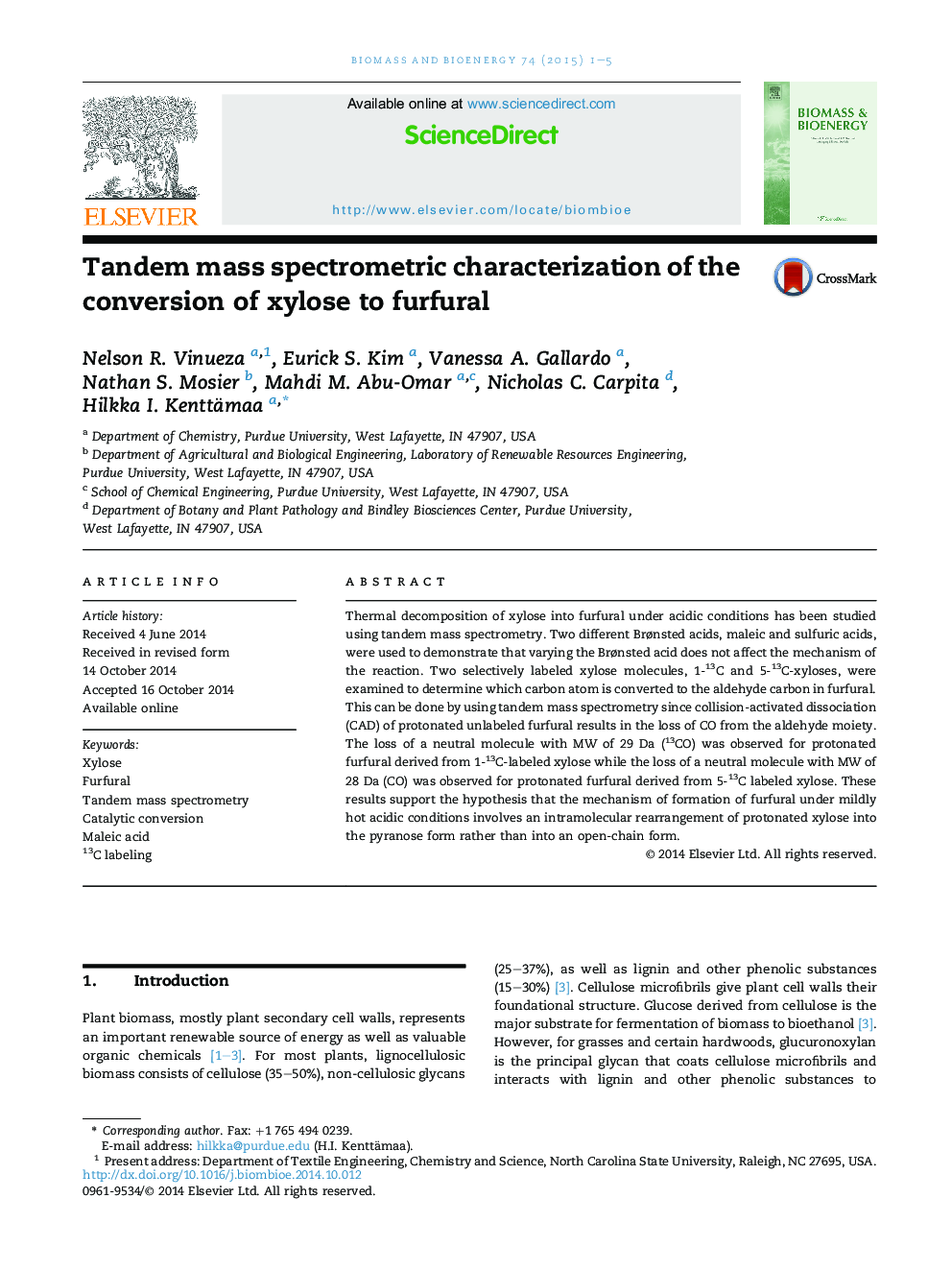| Article ID | Journal | Published Year | Pages | File Type |
|---|---|---|---|---|
| 7063967 | Biomass and Bioenergy | 2015 | 5 Pages |
Abstract
Thermal decomposition of xylose into furfural under acidic conditions has been studied using tandem mass spectrometry. Two different Brønsted acids, maleic and sulfuric acids, were used to demonstrate that varying the Brønsted acid does not affect the mechanism of the reaction. Two selectively labeled xylose molecules, 1-13C and 5-13C-xyloses, were examined to determine which carbon atom is converted to the aldehyde carbon in furfural. This can be done by using tandem mass spectrometry since collision-activated dissociation (CAD) of protonated unlabeled furfural results in the loss of CO from the aldehyde moiety. The loss of a neutral molecule with MW of 29 Da (13CO) was observed for protonated furfural derived from 1-13C-labeled xylose while the loss of a neutral molecule with MW of 28 Da (CO) was observed for protonated furfural derived from 5-13C labeled xylose. These results support the hypothesis that the mechanism of formation of furfural under mildly hot acidic conditions involves an intramolecular rearrangement of protonated xylose into the pyranose form rather than into an open-chain form.
Related Topics
Physical Sciences and Engineering
Chemical Engineering
Process Chemistry and Technology
Authors
Nelson R. Vinueza, Eurick S. Kim, Vanessa A. Gallardo, Nathan S. Mosier, Mahdi M. Abu-Omar, Nicholas C. Carpita, Hilkka I. Kenttämaa,
